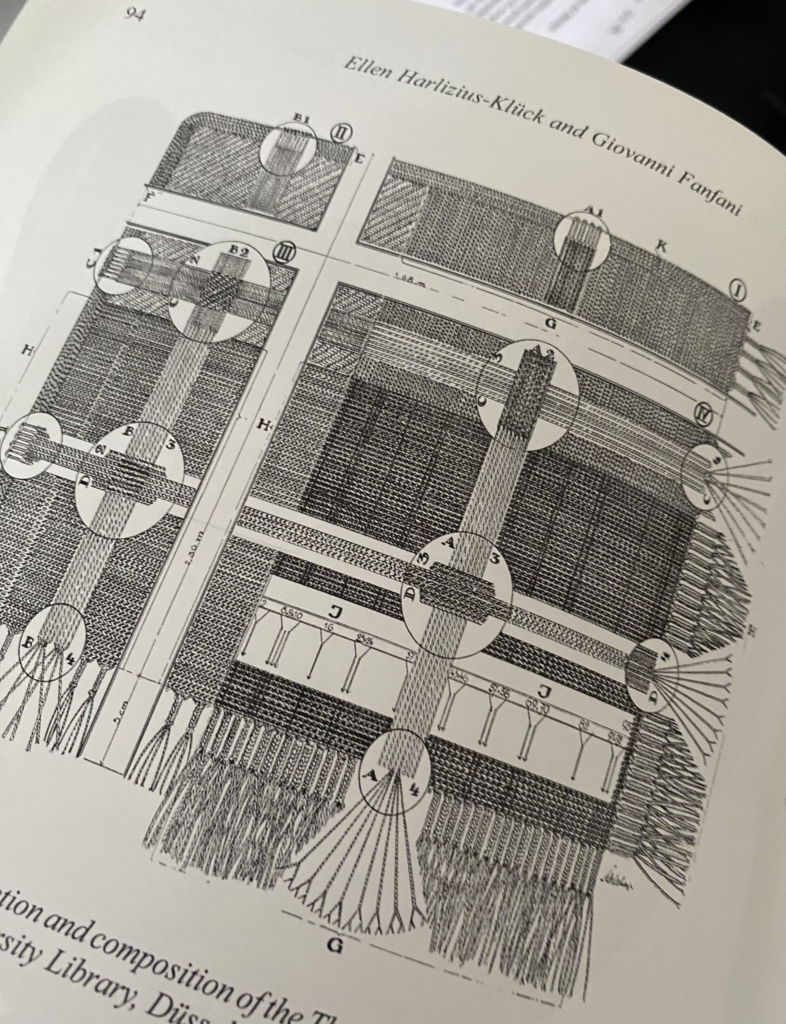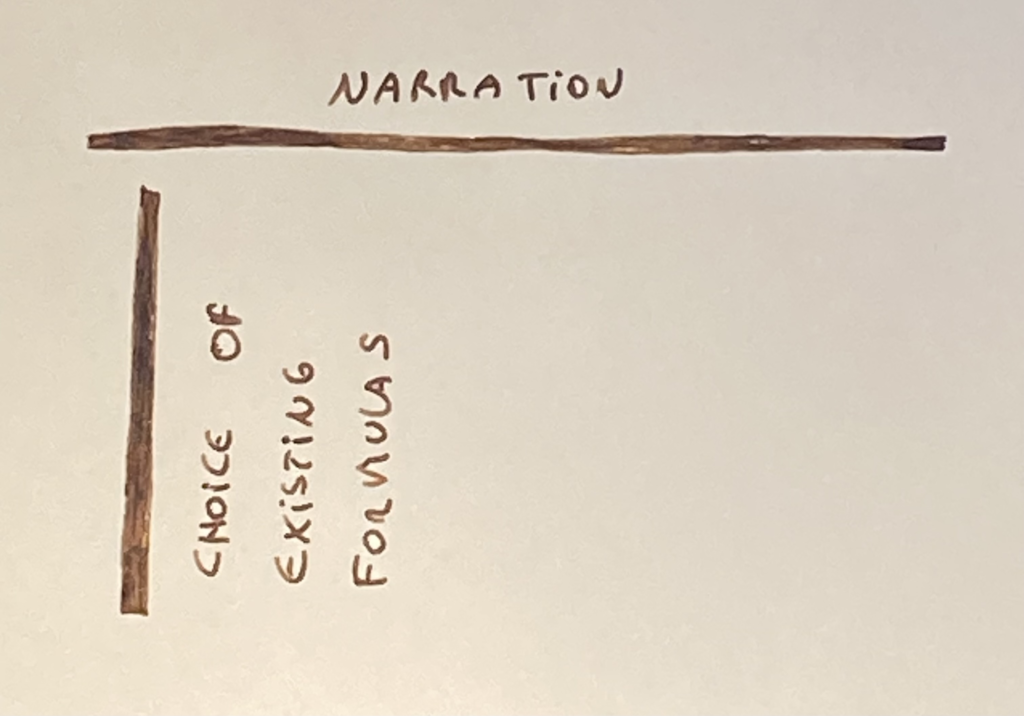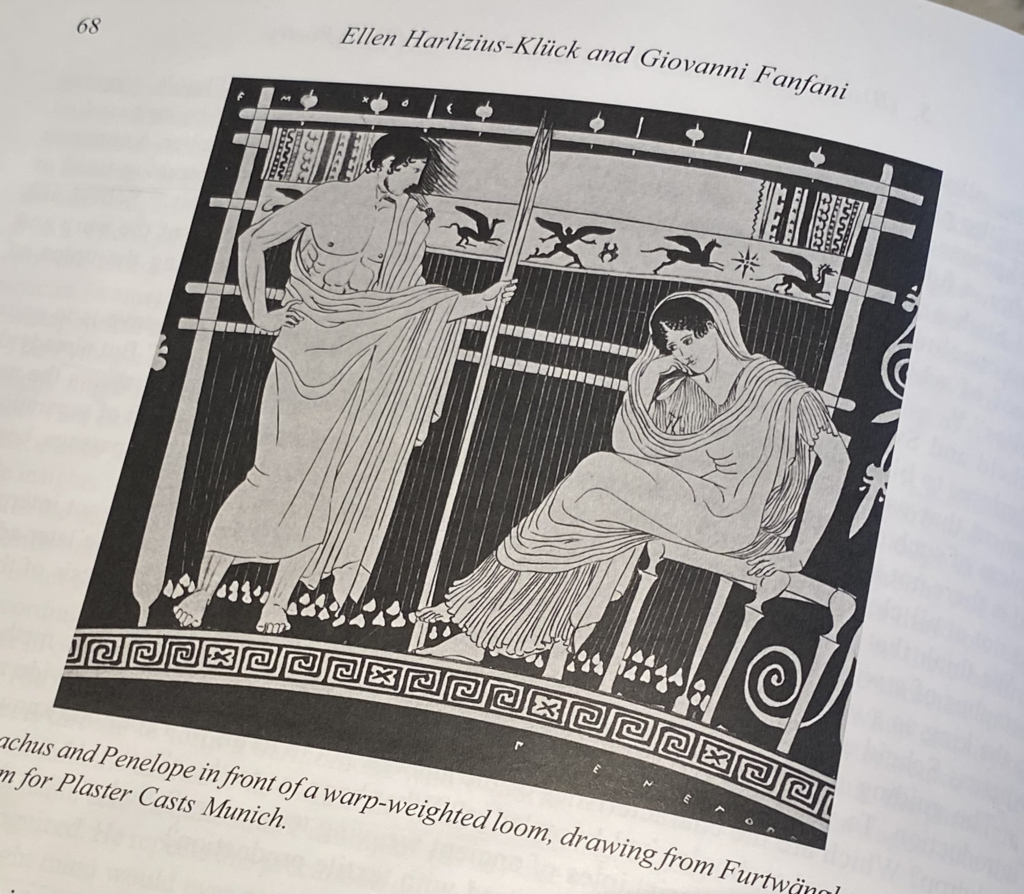
Source: Photo of Fanfani, Harlow & Nosch (2016: 94)
Throughout the ages, language has been imagined as textile, resembling woven matter. In Vedic India, in ancient Rome and Greece, the vocabulary of textile crafts was used to talk about language. The legacy of such metaphors lives on in our language. We think about written language as ‘text’, derived from the Latin for ‘woven’ (textus). Likewise, we use the word ‘hymn’ from the Greek ‘to weave’ (huphaínein). It is important to acknowledge these etymological links, and to be aware of the historical legacy of such conceptual metaphors. Perhaps this is a somewhat restricted frame though, as it does not assist us to visualise how and why weaving became central to a conceptualisation of language.

When weaving textiles, the threads on a loom are installed first and are called the warp. These are the threads over and under which other threads (the weft, or crosswise threads) are passed to make cloth. In classical antiquity the equation of speech with weaving came from the characteristics of speech itself. Speech too is organised along two intertwining axes. Within this perspective on language the syntax or pattern of speech features on the horizontal axis. The lexical choices constitute the vertical axis. This visualisation includes a level of abstraction we seldom cultivate within our culture and the field of contemporary linguistics. The notion of ‘lexical choice’, stands for one word chosen amongst many possible others. The potential, virtual other words, that were never uttered became visualised along a vertical axis. The fact that this realm of possibility is included in the visualisation of language attests to the level of abstraction inherent in textile metaphors.

It is important to bear in mind that these ancient metaphors of language emerged in a milieu dominated by an oral tradition, language in its spoken rather than written form. Another poignant image emerged from the realm of traditional Greek poetry. Here poetic diction features a horizontal axis of narration, of an unfolding story. Poets could rely on an extensive corpus of formulas, ready-made poetic devices that could be chosen and used at will. Here the same level of abstraction plays a role in the equation of poetic speech and weaving. The vertical axis is thereby visualised as a list of options, items to be selected among the richness of existing formulas. Such a visualisation also resonates in the Old English ‘I wove the poetic art’ (‘wordcraeft wœf’). For now, for this blog on the architecture of language I will retain the image of ‘two intertwining axes’, without perhaps the need to call them vertical or horizontal.

Source: Photo of Fanfani, Harlow & Nosch (2016: 68)
References
Guilleux, N. (2016). Of metaphorical matrices and their networks: Generally speaking, and in the field of textile activities. In Fanfani, G., Harlow, M. & Nosch, M.L (Eds.) Spinning tales and the song of the loom. The use of textiles, clothing and cloth production as metaphor, symbol and narrative device in Green and Latin literature. Oxbow Books.
pp. 1, 11, 12, 68, 94
Lakoff, G. & Johnson, M.L. (1980). Metaphors we live by. The University of Chicago Press.
p. 46
Nagy G (2017) On weaving and sewing as metaphors for ancient Greek verbal arts. Classical inquiries. Studies on the ancient world from Centre for Hellenic Studies, Harvard University. Available via https://classical-inquiries.chs.harvard.edu/on-weaving-and-sewing-as-metaphors-for-ancient-greek-verbal-arts/
McIntosh Snyder, J. (1981). The web of song. CJ 76, 193-196.
Schmitt, R. (1967). Dichtung und Dichtersprache in indogermanischer Zeit. Wiesbaden.